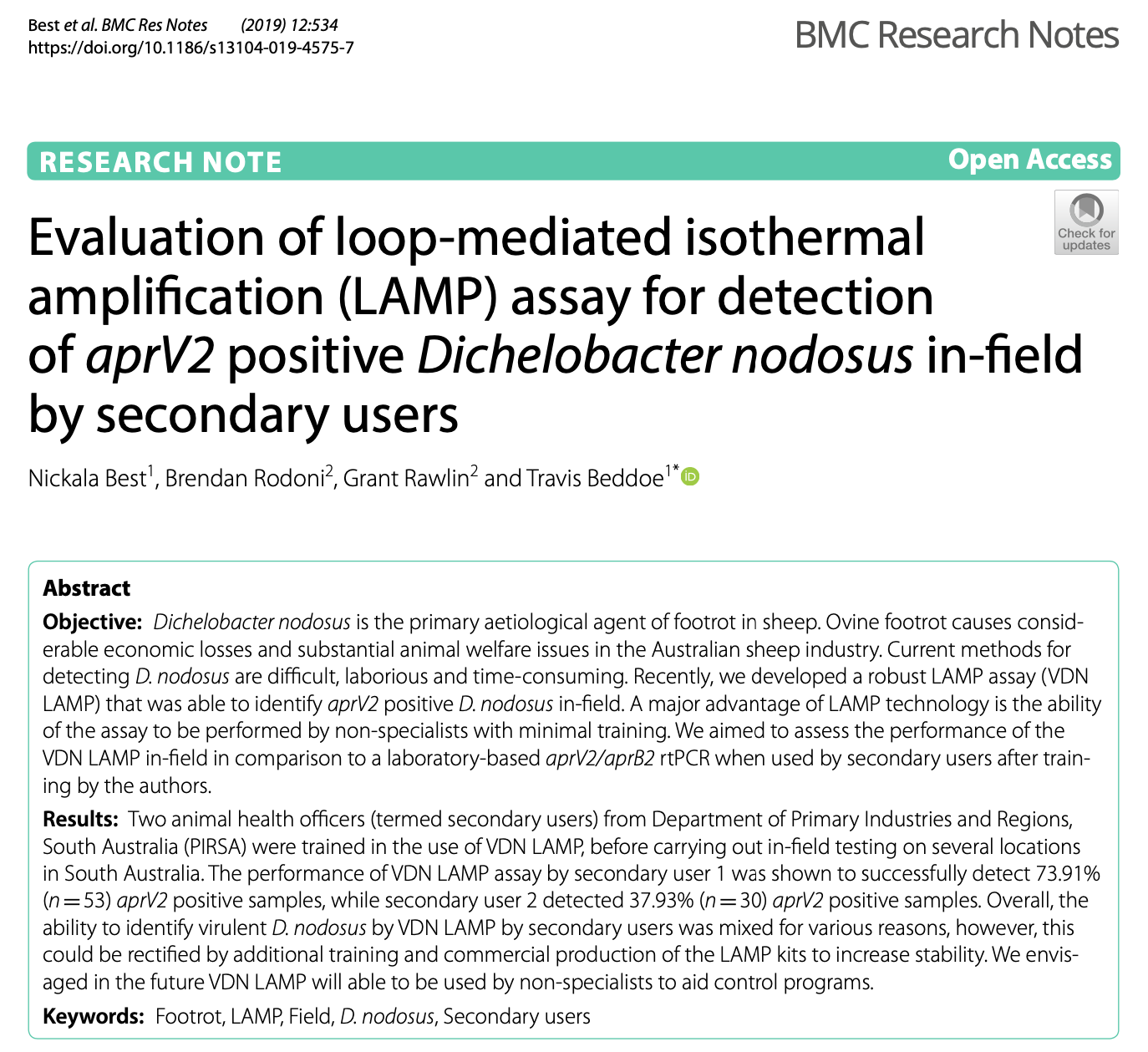
- June 04, 2020
Evaluation of loop-mediated isothermal amplification (LAMP) assay for detection of aprV2 positive Dichelobacter nodosus in-field by secondary users
Nickala Best, Brendan Rodoni, Grant Rawlin and Travis Beddoe|Department of Animal, Plant and Soil Science and Centre for AgriBioscience (AgriBio), La Trobe University, Bundoora, Melbourne, VIC, Australia, Department of Jobs, Precincts and Regions, Centre for AgriBioscience (AgriBio), Victorian Government, Bundoora, Melbourne, VIC, Australia|2019|BMC Research Notes|12:534 https://doi.org/10.1186/s13104-019-4575-7
Dichelobacter nodosus (D. nodosus) is a primary causative agent of footrot in sheep. Footrot results in painful lesions that lead to major welfare and economic concerns. Current testing involves agglutination tests that can take up to 3-4 weeks for results, allowing for rapid infectious spread throughout the farm. Molecular diagnostic tests using RT-qPCR have been developed to decrease the turn over time. Despite this, they still require samples to be sent to a specialised laboratory. In this study, a loop-mediated isothermal amplification (LAMP) assay was developed to determine if sheep were infected with the clinically virulent aprV2 strain. The LAMP assay was tested for use in-field by non-technical personnel and compared to the performance of the gold standard RT-qPCR diagnostic assay, performed on the Mic qPCR Cycler. Two secondary users were trained in the use of the LAMP assay, before carrying out in-field testing on several locations. The data shows a 60% sensitivity and 100% specificity, with 46/75 rtPCR aprV2 positive samples identified in-field by LAMP and secondary users. This is in comparison to 89% sensitivity and 97% specificity under ideal conditions, showing that quality control of reagents and contamination being a large aspect in assay quality. With additional training and improved transport conditions of reagents, the in-field LAMP assay can allow management of footrot in real time by non-technical personnel. This would lead to early treatment and reduced spread on the farm.
Read More